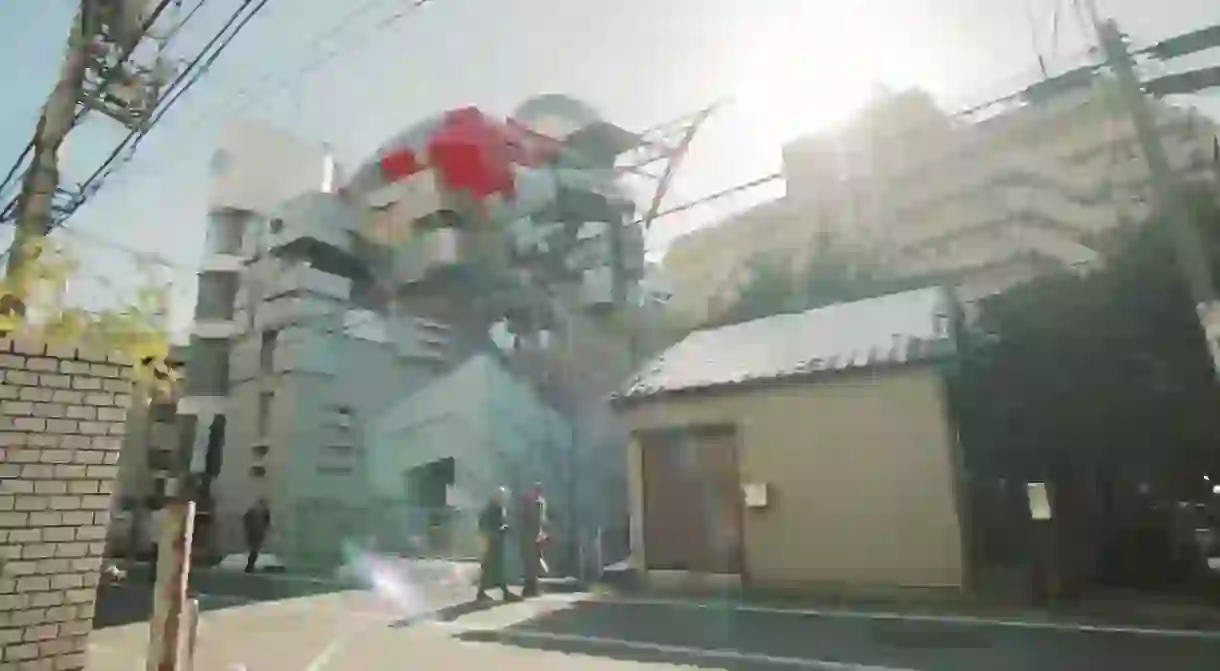Algorithmic Architecture: The Designs of Makoto Sei Watanabe

At first, you might think your eyes are deceiving you. On a quiet street in Tokyo’s Shibuya district sits a building that, at first glance, appears not to be a building at all. It looks more like someone has taken the torso of a giant Gundam and welded it incongruously onto the side of a residential building. If you go in for a closer look, underneath the flashes of anime red-and-silver, there seems to be some kind of structure placed haphazardly underneath. The entire building is Aoyama Technical College, and it is the work of one man: visionary architect Makoto Sei Watanabe.
The structure, completed in 1990, was Watanabe’s first major work and showcased his approach to contemporary architecture: unconventional, trend-defying and lucid.

This approach can be seen across all his works, which when seen from a distance could easily be mistaken for giant art installations. Their appearance evokes a sense of wonder and discomfort. But what truly separates Watanabe from so many of his peers is the way he embraces bleeding-edge tech as part of his creative process, by utilising algorithms as a “partner” in his design of architecture.
Nowadays, algorithms are fast becoming a dirty word due to their disruptive presence across social media. Watanabe takes this same sense of disruption and puts it to use, creating the sort of buildings you would expect to see in concept art for science fiction films.
In his 2002 book Induction Design, he elaborates on his outlook and his approach. He writes: “The purpose is not to discover form. The purpose is to discover ways of making cities and architecture that provide better solutions to problems facing the world while at the same time offering greater freedom to the imagination.”

Architecture is a process fraught with obstacles; what to build, where to build it, what to build it from. Each design comes with its own set of issues and potential difficulties. As Watanabe puts it: “Every project has conditions that require solutions.”
In order to confront these solutions, any architect needs to be able to describe what they want. If they can describe it, Watanabe says, then they can also program it. And that’s where the computers come in, working at the architect’s behest to clarify anything that was vague or finding ways around any tricky stumbling blocks. And to suggest beautiful alternatives that human minds couldn’t come up with by themselves.
But as Watanabe makes clear, it isn’t about simply firing up a MacBook and letting it do all the work for you: “The idea is not to automate design. It is not about being able to complete design with the click of a mouse.”
“It is also not about having the computer create a large number of proposals from which to choose. It is not about using computers to create unusual forms. When used like that, a computer would be nothing more than an extension of the pen in the hand. It is about using computers to think, as an extension of the brain.”

Man and machine, then, form a sort of symbiote so that a better building might be the fruit of their endeavours. Appropriately, Watanabe’s philosophy is in keeping with themes that have dominated Japanese manga and anime for decades, namely the implications of humans and technology becoming as one.
Just as a human being can utilise a computer to perform tasks he or she could not do all by themselves, so too does technology liberate architects from the constraints of conventional thinking. This philosophy has stood Watanabe in good stead throughout his career. His works have appeared not just across Japan but also in Shanghai and Taiwan. He has collected awards for his work, including the prestigious 2002 AIJ Prize from the Architectural Institute of Japan.

In his own words, Watanabe sums up his approach to design: “Architecture ought to be something capable of moving people’s hearts and giving them a physical thrill in a way possible in no other art.
“It is not my aim either to transplant to Japan the classic Western patterns of building cities or to put up with the chaos of Tokyo at it is, but to grope for the way we want the new city to be.”













